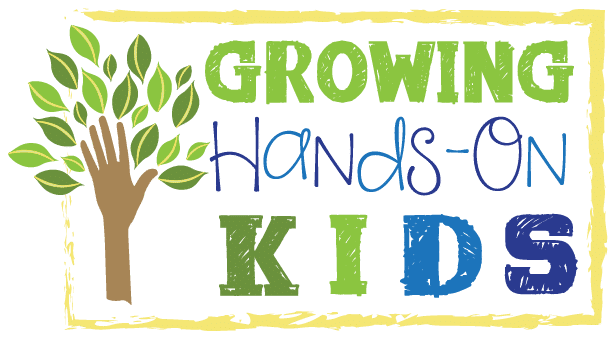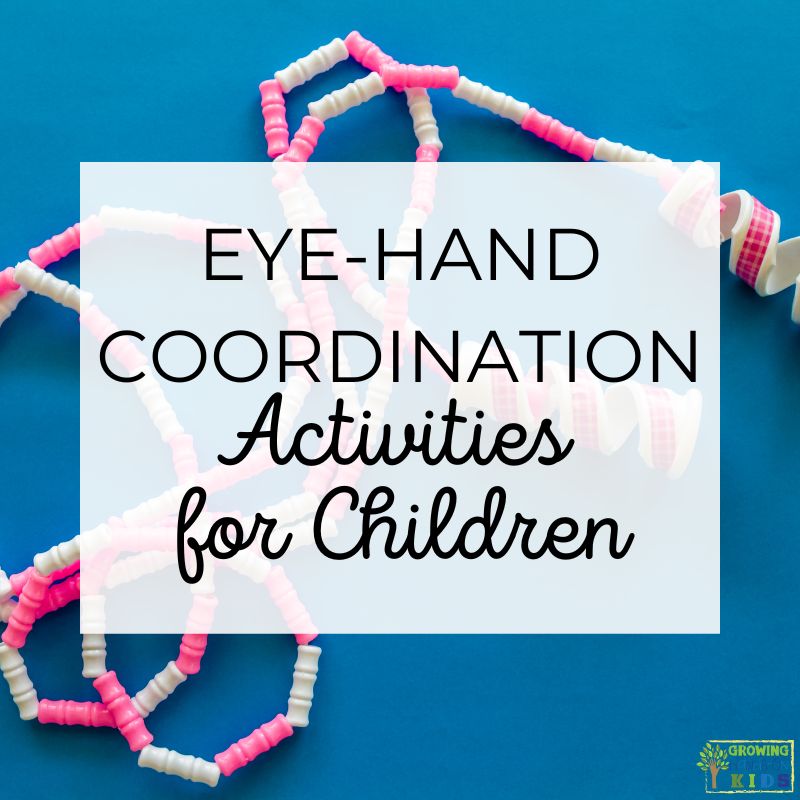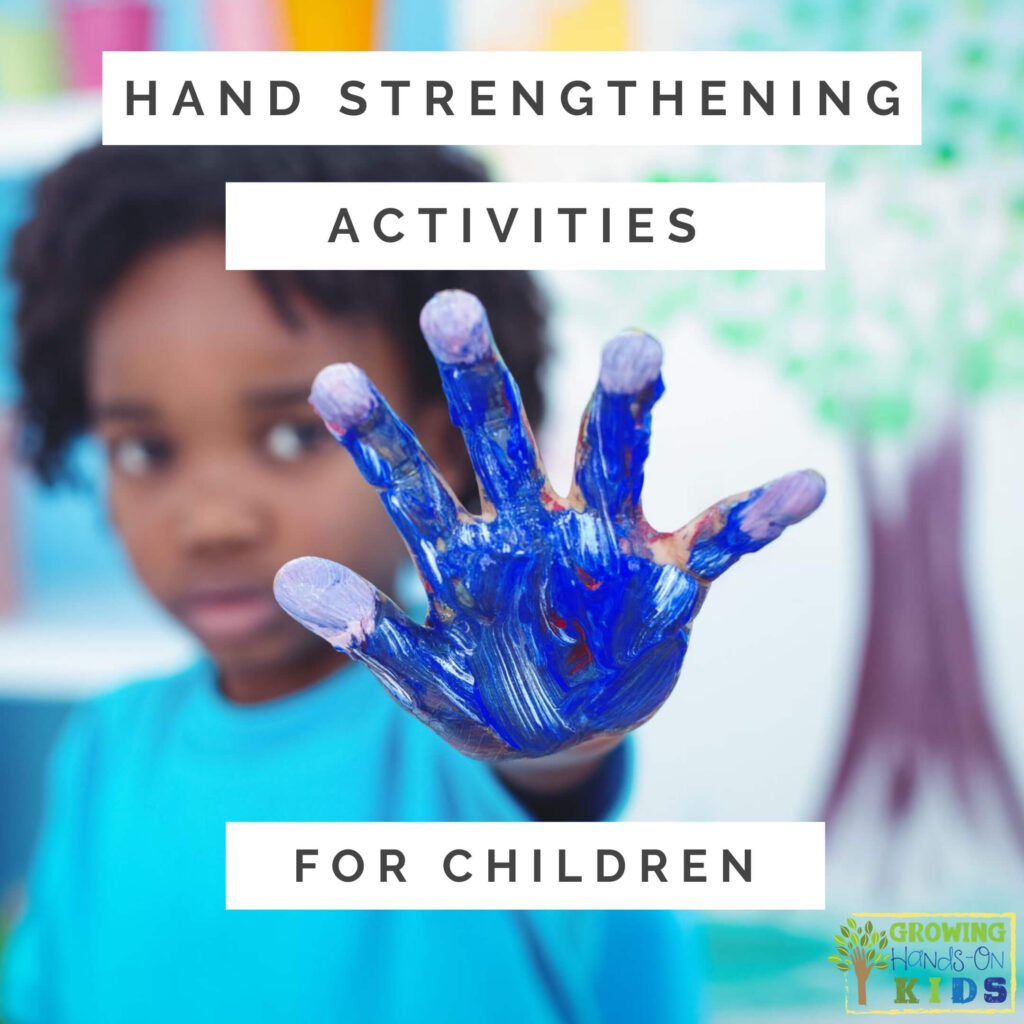Eye-Hand Coordination Activities for Children
Affiliate and Referral links are used below to promote products I love and recommend. I receive a commission on any purchases made through these links. Please see my disclosure policy for more details. As an Amazon Associate, I earn from qualifying purchases.
Completing eye-hand coordination activities can improve visual perception and coordination skills in children. It is an important part of fine motor skill development and here are some easy ways you can help children improve this skill.
Table of contents for eye-hand coordination
Activities to Promote Eye-Hand Coordination
Here is a short list of eye-hand coordination activities to help your children increase their fine motor skills:
Bat at a balloon
Kick or catch a ball
Playing tennis
Play jump rope
Play and build with blocks
Connect the dots
String beads
Play Simon Says
Complete puzzles
Relay races
Crochet, knit, or sew
Play video games
Lace cards
Sports such as basketball
Keep reading to learn more about why eye-hand coordination is an important part of child development.
What is Eye-Hand Coordination?
You may see this skill referred to as hand-eye coordination. It is the coordinated control and movement of the eyes and hands that guide our reaching, grasping, etc.
It uses the proprioception system in the hand and/or legs and the visual system to coordinate these movements.
Eye-Hand Coordination Development
Eye-hand coordination begins to develop between 4 and 14 months old when a baby begins to use their hands and legs to explore around them. Together with visual input and developing fine motor skills, a baby begins to grasp and hold objects, while fine-tuning these movements as they grow.
The visual system is comprised of more than just visual acuity, being able to distinguish what the eyes see. It also involves being able to fixate on objects, eye movement abilities, focusing, eye aiming (convergence) and eye teaming (binocularity), and controlling eye and hand movements.
Fine motor skills need movement and coordination of the small muscles in the hand and arm in order to complete tasks and activities.
Let's take a look at some of the eye-hand coordination skills a child masters at different ages.
Birth to 3 years old
- Develops the vision needed in order to start following objects with their eyes
- Begin basic eye-hand activities such as grasping, reaching, feeding, and dressing
- Starts to recognize directions such as up, down, in, and out
- Begins to manipulate smaller objects using fine motor skills
3 Years Old to 5 Years Old
- Starts to develop a preference for right or left-handedness
- Understands concepts such as direction and place such as up, down, under, beside
- Climbing, jumping, running, galloping, pushing, pulling, and climbing stairs one stair at a time
- Fine-tunes eye/hand/body coordination and eye teaming as well as depth perception
Children above the age of 5 continue to improve all these skills as well as learn to visually attend to and focus during school work activities in the classroom or at home. They also tend to decide whether to be right or left-handed between 5 and 7 years old (handedness).
Eye-Hand Coordination Difficulties
Eye-hand coordination is important for a variety of tasks including handwriting, participating in sports, grasping and moving objects, etc.
Difficulty with eye-hand coordination can look like a lack of drawing or writing skills, unable to stay within the lines for coloring, or difficulty catching or kicking a ball.
Remember to check when these skills are age-appropriate for your child to complete. And as always, if you have concerns talk to your child's doctor.
What causes poor hand-eye coordination?
Eye-hand coordination challenges can occur because of how the brain and eyes communicate. The most common reason these challenges occur is because of vision problems and movement disorders.
Eye-hand coordination skills can also be affected by vision impairment and/or loss or motor problems such as ataxia (lack of coordination of voluntary movements) or hypertonia (abnormally increased muscle tone which affects the muscle's ability to stretch).
Poor eye-hand coordination can accompany diagnoses such as cerebral palsy, developmental coordination disorders, Autism spectrum disorder, and some visual disorders like optic ataxia.
If you suspect your child may have eye-hand coordination problems, talk to your child's doctor to ask for an Occupational Therapy evaluation. It's also important to get a comprehensive eye exam to rule out any physical challenges with their eyes or vision problems.
Occupational Therapists will also work with your child to improve their coordination and moving of the eyes and hands together in order to complete everyday tasks.
Resources and sources for this topic are listed below:
- Hand-Eye Coordination – Children's Health
- Hand-Eye Coordination Activities – OT Mom Learning Activities
- Eye-Hand Coordination – North Shore Pediatric Therapy
You May Also Like:

Heather Greutman, COTA
Heather Greutman is a Certified Occupational Therapy Assistant with experience in school-based OT services for preschool through high school. She uses her background to share child development tips, tools, and strategies for parents, educators, and therapists. She is the author of many ebooks including The Basics of Fine Motor Skills, and Basics of Pre-Writing Skills, and co-author of Sensory Processing Explained: A Handbook for Parents and Educators.


